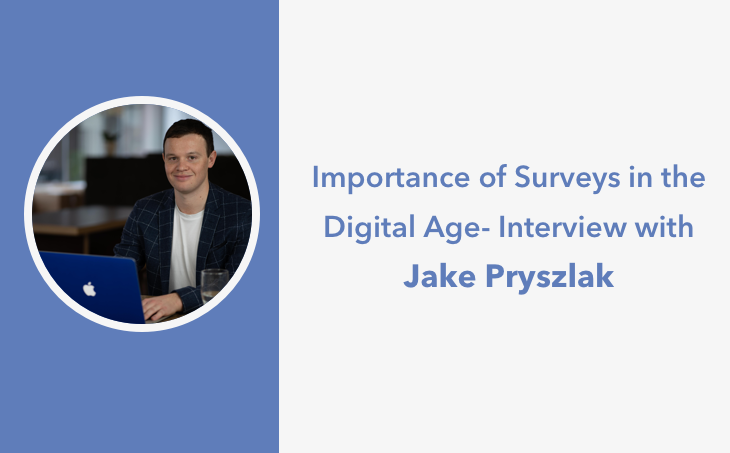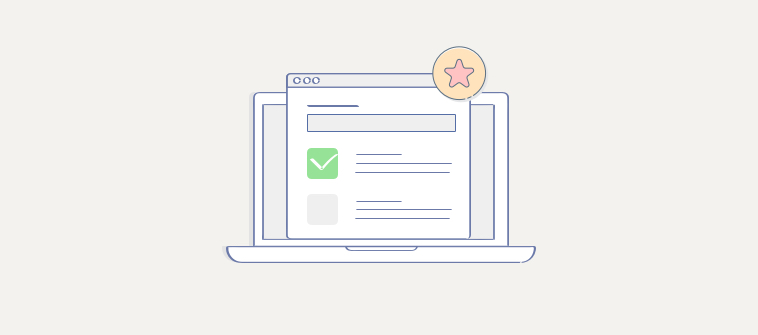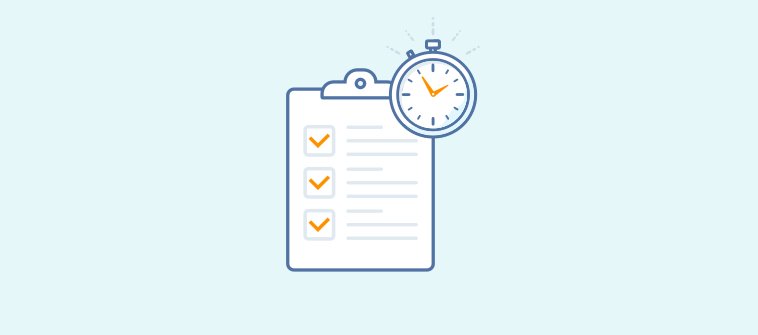
If you are confused about who your customers are and what they really need, psychographic segmentation can help. It divides customers based on their psychological traits – preferences, personality, lifestyle, and beliefs, and gives you a sneak peek of their thought processes.
In this blog, we have covered everything about psychographic segmentation to help you understand your customers better. Take a look.
What is Psychographic Segmentation?
Psychographic segmentation is a proactive marketing strategy that includes categorizing the target audience based on their activities, interests, opinions, personality, and lifestyle. Such insights are often based on both demographic and behavioral data points, and businesses use those insights to create specific audience segments.
A psychographic segment example could be a student interested in purchasing an online course. For creating this segment, take the person’s profession (demographics) and his likelihood of purchasing an online course (behavioral). Now connect both the data to create a psychographic market segmentation.
But how can you gather psychographics? Let’s understand it in the following section.
How to Collect Psychographic Data
The collected data for psychographic segmentation is often qualitative because marketers perform market research via interviews, open-ended survey questions, focus groups, and research panels. This data helps businesses to differentiate themselves in the fierce market competition in terms of understanding their target audience.
1. Surveys/Questionnaires
Surveys are the most commonly used research method by businesses to capture audience data. They are inexpensive to produce and can be easily distributed either in-person or digitally by using one of the best survey software.
Psychographic surveys are used to analyze and categorize audiences according to psychological criteria, such as their attitudes, aspirations, values, lifestyle, and personality.
If you know more about how your customers think, you will be able to offer tailored products as per their needs. Psychographics help you gain a deeper understanding of your target audience and create their psychographic profiles.
For this, you can simply ask:
- How do you feel about robotics?
- Have you owned any AI-powered gadgets? If yes, what it was?
Such open-ended questions help you to drill down into customer specifics as the customers are less likely to get influenced by the list of responses available in closed-ended questions.
Related Read: Customer Satisfaction Surveys Questions
2. Focus Groups
A focus group is generally a small group of selected participants that matches your target audience. Such participants contribute to open discussions to help businesses understand their mindset.
However, for accurate results, it is essential to carefully select participants for the discussion that exactly represent the larger population that a business is attempting to target.
Thus, there are two main pillars involved when it comes to the focus group discussion:
Participants: Selection of the participants is a crucial step in conducting a focus group. You must make sure the participants possess knowledge about the subject. However, you could seek assistance from a research-based organization if you need help selecting members that resonate with your target audience.
Moderators: The moderator is someone who conducts the group discussions with confidence and leads the participants through several questions. As the researcher, you can also be the moderator, or you can also hire an external professional moderator to conduct your focus group surveys.
3. Website Analytics
Web analytics involves analyzing the behavior of your website visitors. It includes tracking, reviewing, and reporting data that measure web activity, such as interactions with web pages, images, and videos.
Web analytics helps in determining:
- Which product are most and least liked by the customers
- The likelihood of a customer repurchasing a product
- The amount of money customers are willing to spend
- The geographic areas from where the most and the least customers visit your website and purchase products/services.
In a nutshell, the better understanding of the customers and their buying habits you have, the more accurately you can plan your future strategies. Such strategies will help you deliver the right product at the right time to the customers.
4. Social Media
Social media users tend to be much more open when interacting via social channels, which makes social media one of the best means to collect psychographic information.
The use of social media channels not only helps you to interact in a humanly way and develop good relationships but also helps in collecting a decent insight into the lives of the psychographic target market audience.
However, keep the following points in mind before selecting an ideal social media channel:
- Choose the platform your audience is using: Choosing the exact same platform your ideal customers are using will lead to ease of communication between your brand and the customers
- Think of the channel your competitors are using: Analyzing your competitors can open the doors to more opportunities you are thinking of right now. Look for the social media accounts your competitors are using and analyze how often they post, which type of content they use, and the number of likes and shares they gain on a single post.
- Think of the channel that resonates with the service you offer: Selecting a social media platform as per your products/services will also help you capture the right psychographic data. For example, for some businesses Facebook and LinkedIn are more suitable, while Pinterest and Instagram work best for others.
Advantages of Psychographic Segmentation
Collecting and analyzing customer data based on their personalities, attitudes, and beliefs enable you to draw insights into their needs. It acts as a key to delivering a valuable, relevant, and exciting brand experience to the target audience.
Here are some of the advantages that you could reap by incorporating psychographic segmentation into your business strategies:
1. Creates a Better Understanding of the Target Audience
Psychographic data do not just identify what consumers do, but why they do it, through analyzing their personalities, beliefs, and motivations. It helps to build a more holistic picture of consumers when used in combination with other forms of market segmentation.
2. More effective than other segmentation types
Overall, the psychographic segment tends to be more effective than geographic or demographic segmentation. It provides detailed insights on the audience’s characteristics, such as interests, lifestyles, and opinions, which other segmentation can’t.
3. Reveals Hidden Attitudes
Psychographic segmentation reveals unseen motivations and attitudes behind buyer decisions. As a result, it allows brands to offer better and more relevant customization, not only of products and services but of communication and targeted brand campaigns.
4. More Efficient Use of Resources
Brands can save a lot on resources via more accurate development of new products when they know the consumer preferences and desires. The same applies to advertising and brand campaign efforts.
For example, if you analyze through segmentation that a few of your audience likes watching sports, while others prefer watching movies, then you can tailor your marketing activities to cater to their respective needs.
How to Use Psychographic Data in Marketing
1. Tailor Your Brand Values
The way you position yourself in front of your target audience has a direct impact on how well you’ll be able to connect with them. If you strike the right chords, you can build a base of loyal customers, which can be further converted into brand ambassadors easily.
Hence, consider the psychographic profiles of your most loyal followers and tailor your brand’s values to match with them. It will serve as the main touchpoint.
For instance, take a quick look at ProProfs’s website, and it’s clear that they emphasize making customers happy through delightfully simple yet smart tools.
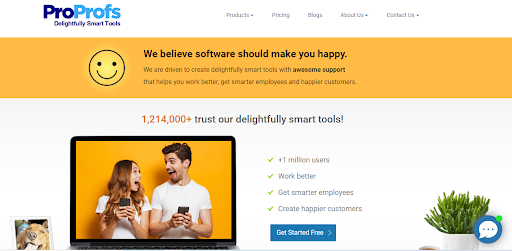
2. Identify Trends and Opportunities
When you have the psychographic data, try to identify any trend patterns that are unique. Your target audience may commonly hold beliefs about your brand that you hadn’t recognized before. Similarly, there may be segments of customers you hadn’t considered before.
Hence, by analyzing psychographic data, you can find ways to serve such unrealized customer segments and find new ways to connect with them.
3. Create Psychographic Profiles
After analyzing trend patterns, your goal is to find repeating beliefs and ‘segment’ them to create multiple psychographic profiles.
The first thing you should do is filter your survey responses.
Let’s assume, if you get 1,000 survey responses and only 65% of them come from primary demographic users, you can set the other 350 responses aside.
Now take note of the questions for which a large percentage of respondents share similar views. For example, you want to create psychographic profiles for Survey software users. One of your survey questions might be:
“Why did you decide to use PrProfs Survey Maker over the competitors?”
You could receive the answers as:
- It’s the easiest platform to use
- I didn’t know about any other options
- It has a broad selection of themes to choose from
- I wanted to use a budget-friendly solution
In case, if the first and fourth responses were the most popular among respondents, you could now develop two psychographic profiles:
- One for those ‘new to creating surveys’
- The other is for ‘budget-minded users
This way, psychographic data helps you develop segmentation and create more refined profiles to target potential customers.
4. Create More Refined Campaigns
Social media platforms such as Facebook offer granular ad campaigns to target prospective customers.
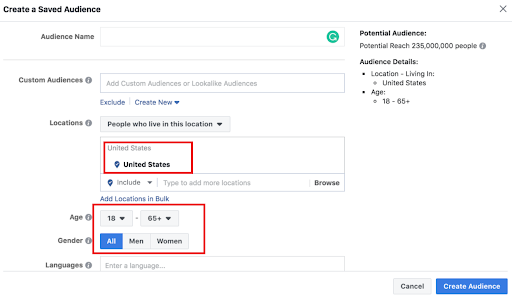
Although, targeting your potential customers based on their demographics is an effective strategy, yet using the psychographic data you can dig even deeper that will open up the doors of new opportunities for conversions.
After you have collected psychographic data, look for the common attributes that your target audience shares. It could be their beliefs, opinions, or attitudes. All these details could yield new opportunities that you may not have considered previously.
FREE. All Features. FOREVER!
Try our Forever FREE account with all premium features!
Psychographic Segmentation Variables
Psychographic variables may include lifestyle, habits, and interests, which greatly influence a consumer’s behavior. Businesses use these factors to segment their target audience based on their psychographic data.
For example, if you want to segment your audience based on habits as a psychographic factor, you need to decide whether your potential customers are attending sports classes, art exhibitions, working as a dance teacher, engaging in active activities, or living a sedentary lifestyle.
Indeed, there are different ways to segment a target audience as per psychographic data, but there are a few you’ll need to include from the start. Let’s take a look at some popular psychographic variables.
1. Personality
The personality trait variable provides businesses with information about customers’ beliefs, motivations, morals, and overall outlook on their life.
Also, brands may choose to evaluate how creative, friendly, opinionated, or emotional are their customers. This helps them identify what personality traits they have in common, which further helps them customize their advertisements/marketing to provide them with the most valuable experience.
2. Lifestyle
This psychographic segmentation variable intends to collect insights about a customer’s habits and preferences.
Businesses usually conduct surveys, and make use of previous sales information or data from their loyalty program to identify:
- How do their customers spend their time?
- What items or products do they use the most?
- What items are the most important to them?
Then marketers use this information to segment individuals who lead similar lifestyles.
3. Social Class
Businesses also use the social class psychographic segmentation variable to classify the customers as per their income level. Just because every social class has brand preferences based on their income, this can help companies decide what type of consumers may find their product valuable.
For example:
- Top-upper class: People in the category are quite wealthy and tend to spend their money lavishly. So, they can be approached for premium products and services.
- Top-middle class: Members of the top-middle class usually afford to live a comfortable lifestyle and spend on essential items for their families. They’ve hard-earned their wealth and may still be struggling to grow their career.
- Bottom-lower class: Members of this class are usually underemployed or unemployed, who aim to afford just the essentials for themselves.
4. Attitudes
The attitude psychographic segmentation variable offers insights into how a customer may behave in different situations and what their preferences are. It can be affected by the environment an individual has grown up in, the way their parents had raised them, and their cultural background.
For example, an individual who grew up in a rich family may prefer shopping at high-end brand outlets multiple times a week, whereas a customer who grew up in a middle-class family may prefer to shop only for special occasions.
5. AIO (Activities, Interests, and Opinions)
This psychographic segmentation variable helps identify what activities target customers enjoy, which sort of products they might be interested in, and what are their opinions about certain subjects. It includes:
- Favorite music genre
- Recreational hobbies
- Political party
- Favorite sports team
- Religious organization
- Typical weekend activities
- Favorite food
- Vacation habits
- Favorite store or brand
For example, a company that sells sports items may realize that a significant number of its customers follow sports persons. Now the marketing team should do some additional research to identify which specific sports person their customers follow the most. Then they might reach out to a few of them to see if they might be interested in becoming an influencer for their brand.
Psychographic Segmentation Survey Questions and Templates
Psychographic Segmentation Template
Psychographic Questions
To establish what customers like and dislike:
- Do you actively seek out new experiences, or prefer to stick with what you already know?
- Which activity do you take part in when you have free time?
- Do you prefer spending time with your family or with your friends?
- Where is your ideal holiday destination?
To understand what customers value and prioritize:
- What do you prioritize the most? Family, work, or your social life?
- Are you worried about climate change and its impact?
- What was the recent big-ticket item you bought?
- Are you happy with your work-life balance?
- Are you an optimist or a pessimist?
To understand what motivates them:
- Have you ever boycotted a brand because of a poor experience? If so, which brand?
- What do you pay more attention to? The price or quality of the items?
- Where do you go for advice before purchasing products/services?
- How often do you donate?
To uncover customer interests as per industry
- Have you heard of [brand name] before?
- How often do you use [product name]?
- How long have you been using [product name]?
- Are you opposed to using [product name]?
- How would you feel if you could no longer buy [product name]?
To gauge their opinion on competitors
- Who do you seek advice from when you’re shopping for [product category]?
- Do you feel like you know enough about the products/services before you decide what to buy?
- Are you loyal to one brand of [product name]?
- What is one thing that your favorite brand could do better?
- What do you love about your favorite brand?
- How did you find out about the last product/service you bought?
Do you tend to use [product category] on your own or when in the company of others?
- At what time of day do you use [product name] most often?
- At what price would you consider [product name] to be too expensive to buy?
- Do you feel [product name] brands offer a good level of service?
- How would you search for a new provider of [product name] on the internet?
Leverage Psychographic Segmentation for Business Benefit
Psychographic segmentation has a much higher strategic value in the competitive era. Consumers are becoming smarter, which means businesses are developing new ways to collect customer data to deliver personalized experiences.
Identifying psychographic segments allows you to gain valuable insights about your target market that other forms of segmentation do not cover. It ultimately acts as a tie-breaker when behavioral and demographic data are similar.
On the whole, psychographic market segmentation isn’t about the numbers. It comes from other forms of data, or from focus groups, research surveys, and interviews. When you collect psychographic data, you’re doing qualitative research to build an accurate profile.
To serve the purpose, you can leverage research tools such as ProProfs Survey Maker and Qualaroo that will help you gain insights into the audience’s personas.
FREE. All Features. FOREVER!
Try our Forever FREE account with all premium features!

 We'd love your feedback!
We'd love your feedback!
 Thanks for your feedback!
Thanks for your feedback!


